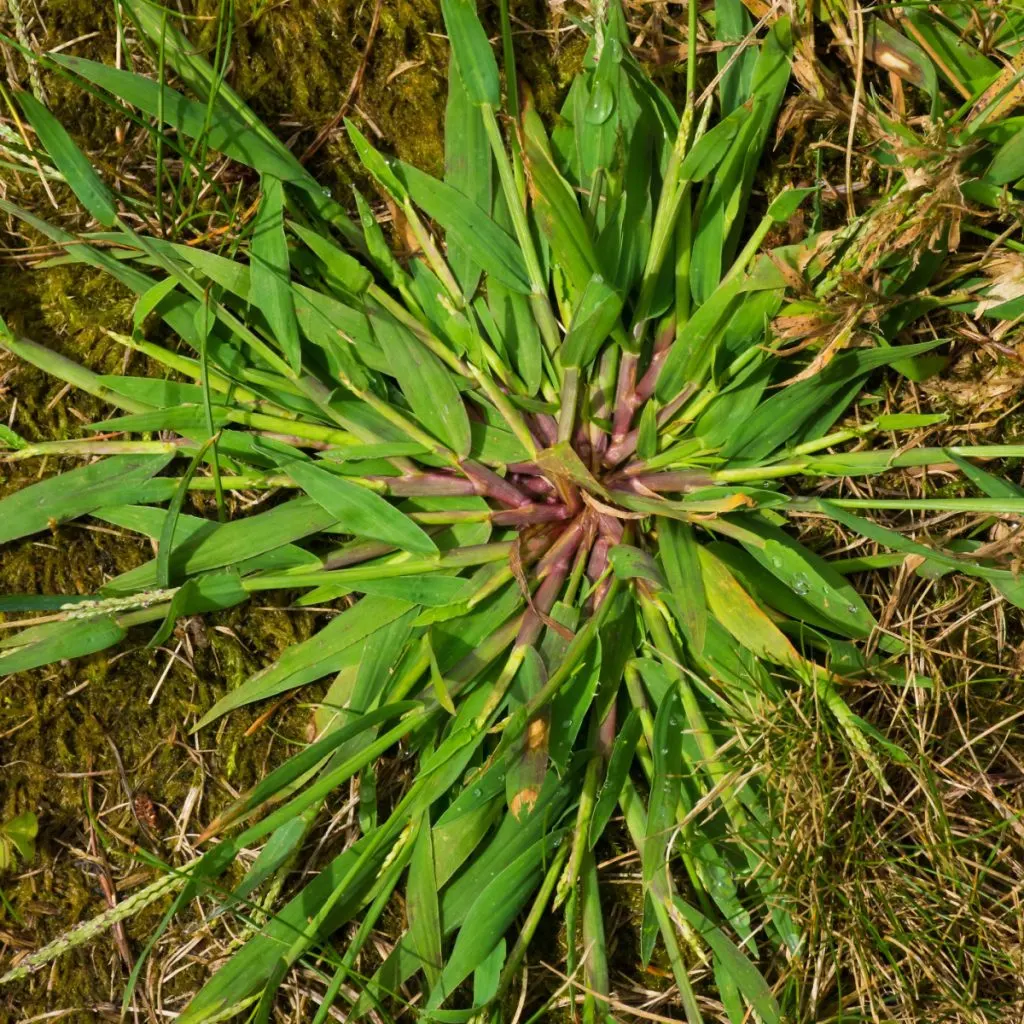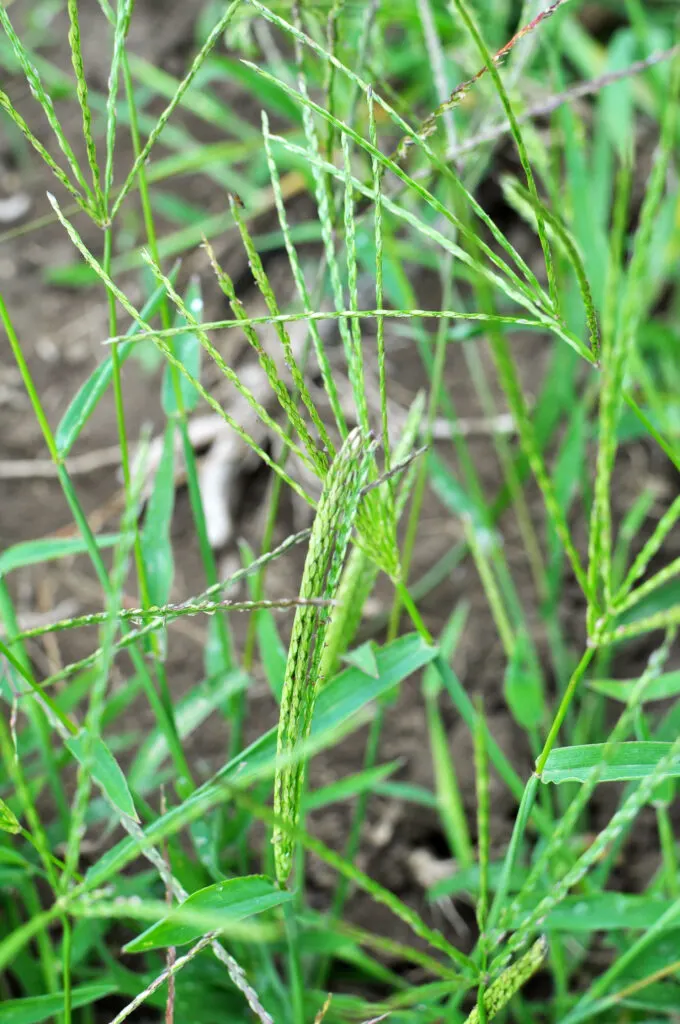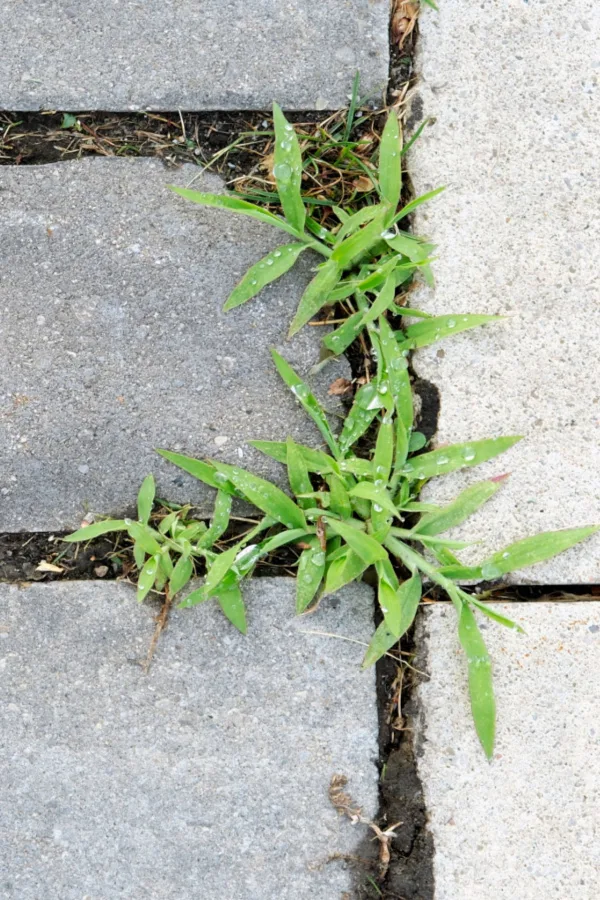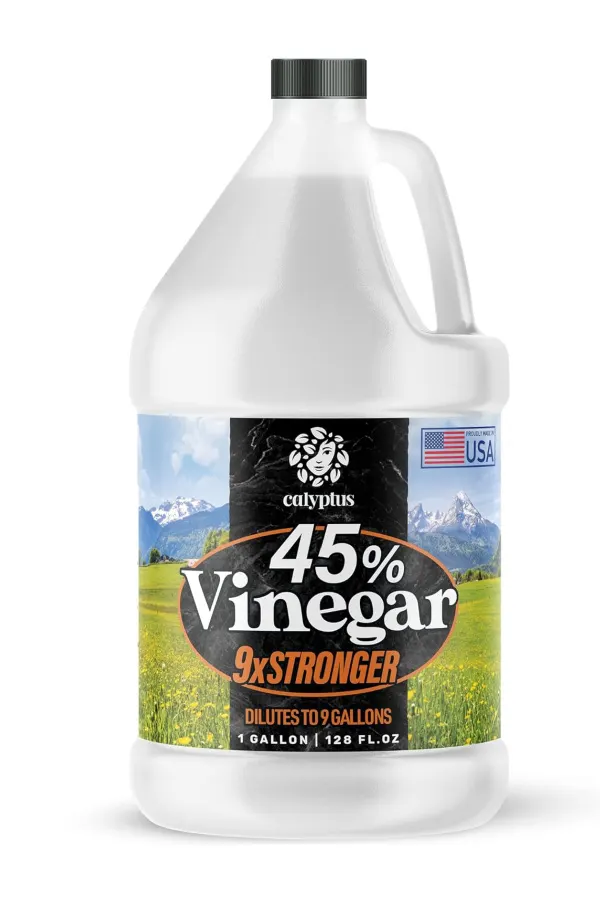Did you know that one of the best times to finally eliminate and get rid of crabgrass from your yard once and for all is in early fall? And unfortunately, on the flip side, if you simply allow it to remain late in the season, it can spell big trouble next year!
Crabgrass gives property owners all kinds of frustration and headaches. The fast-spreading weed can all but overtake a yard in a single season or two. And once it does, it can seem all but impossible to get rid of!
Unfortunately, crabgrass is able to grow and adapt to almost every growing condition and climate. It is highly drought-resistant. So much so that it can often be seen thriving in a sea of dry, brittle grass – staying green long into the fall months. Even in the driest of conditions.

Crabgrass is an annual weed that germinates, grows, and produces seeds all in the same year. However, it’s what the plant leaves behind each year that is the real issue. Once established, each crabgrass plant produces tens of thousands of tiny seeds that fall into the soil.
Why Late Season Care Is Critical
All of those seeds then lie in wait to germinate the following season. It is exactly why just a couple of crabgrass weeds in your lawn this summer and fall can turn into an out-of-control mess next year. That, of course, is exactly why late summer and fall are such critical times to deal with it.
It’s somewhat ironic that although springtime is the time to put down a pre-emergent to stop crabgrass, by doing just a couple of simple chores in late summer and early fall – you can all but eliminate it from ever becoming a serious issue in your lawn. And here’s how:
How To Eliminate Crabgrass In Summer – 2 Secrets To Get Rid Of Crabgrass For Good!
In order to know how to take care of crabgrass in late summer, it’s important to first understand how the plant grows and spreads.
Crabgrass seeds germinate around mid-spring once the soil temperatures rise and stay around 55º Fahrenheit. Even if you didn’t have a crabgrass problem last year, the seeds can find their way to your lawn by the wind or passing animals.

Early on in the growing stage, tiny stems start to sprout up and branch out from a central location. As the stems grow larger, they also become heavier and end up falling to the ground.
Once on the soil, those stems establish roots along nodes, eventually producing secondary stems. This allows a single plant to spread out several feet in all directions. The low-lying stems stay close to the ground and are often passed over by mowers or trimmers.
They are also surprisingly tough and durable and aren’t affected by foot traffic like typical grasses are. In fact, they can even set seeds when they are less than an inch tall.
Once crabgrass plants are allowed to set seeds, the cycle continues. Thankfully, you can stop the cycle with just a little bit of work. The first and most effective of which is hand pulling these large running plants in late summer.
#1 Hand Pulling – How To Eliminate Crabgrass In Summer & Early Fall
When you have just a small issue with crabgrass, one of the best methods for removal is hand pulling. And while hand-picking might be a bit labor intensive, it works fast and is free. And can it ever be helpful to do before your crabgrass produces its seeds!
Hand pulling weeds is only really effective if you tackle the task before the crabgrass begins to produce seed heads. Walk your lawn regularly, looking for and removing any new plants or starts.

Crabgrass is very easy to recognize in yards, especially in the summer and early fall months. Thankfully, it’s also easy to remove as well by using a shovel or small weeding fork. Simply pop up the stems and roots from the ground. Avoid leaving any of the roots behind since they can quickly regenerate into new plants.
After you pull the weeds, spread out a handful of grass seed and cover it with straw. This will avoid leaving behind any bare soil – and is this tip ever huge since it helps to prevent any new weed seeds from finding empty soil and taking up residence.
#2 Spot Treating Crabgrass – How To Eliminate Crabgrass In Summer & Early Fall
The second highly effective way to get rid of crabgrass is by spot treating. This simply involves spraying only the plant and killing it off while the grass remains safe and sound. And it can be done easily by using all natural sprays. Again, it’s important to do this before they start to produce seed heads.
For this, one of the best all natural was to kill off the plant is with horticultural or industrial vinegar. Horticultural vinegar is far stronger than store bought versions that have around 5% acidity. Instead, you can find the stronger industrial types with up to 40 to 45% acidity, which makes quick work of crabgrass. Affiliate Product Link: Calyptus 45% Pure Super Concentrated Vinegar
The key to success is to spray only the weed with the potent vinegar. Weeds like broad leaf, chickweed, and many other unwanted plants can be eliminated with spot treatments as well. When using vinegar, due to the acidity, always wear protective gear to cover eyes and hands.
The thing to keep in mind about spot treating with natural post-emergent sprays is that while they are excellent at quickly killing weeds, they will also kill grasses as well. With this in mind, only use a small amount in a small hand sprayer or dropper for spot treatment only.
Just as before, cover the bare areas with grass seed once the crabgrass dies off.
Mowing With A Purpose – How To Eliminate Crabgrass In Summer & Early Fall
Beyond the hand pulling and spot spraying, you can also help eliminate crabgrass by how you mow your lawn. While this tactic might not help with this year’s weeds, it will help prevent seeds from finding a place to germinate come next spring.
If your crabgrass has already started to develop seed heads, you want to remove as many of them as possible. You can do it by hand, but using a bag attachment on your lawn mower will help to save time and prevent weed seeds from spreading.
The bag gathers up the seed heads and allows you to dispose of them in your city’s local yard waste facility – or by burying deep in a hole. While grass clippings typically make for excellent organic mulch, don’t use these batches for your home or garden.
Since the seed heads are present in the clippings, using them will only help to “plant” the seeds wherever you use the mulch. Also, avoid adding the clippings to your home compost pile since most piles can’t heat up enough to kill seeds.

It’s also important not to mow your grass short throughout the spring and summer months. Aim for a lawn height of around 3 to 3.5 inches during the growing season. The taller lawn will be thicker and help to block sunlight from reaching the soil, which seeds need to germinate.
Treating Next Spring – How To Eliminate Crabgrass In Summer & Early Fall
In addition to helping to get rid of crabgrass in the summer and early fall, the best plan of attack to finally get rid of crabgrass for good is to apply an organic pre-emergent to the lawn in the spring. See: How To Kill Crabgrass In Early Spring – Before It Ever Grows!
An organic pre-emergent is not a herbicide. Instead, it’s a product that prevents seeds from germinating by sterilizing the seeds, usually with the help of corn gluten. But the key to using one successfully is to apply it to the lawn BEFORE the seeds start to germinate. Once the seeds germinate, a pre-emergent is useless.
When it comes to tackling crabgrass issues, be consistent with your approach and be patient. It might take a few years to completely eliminate crabgrass from your yard, but you will eventually win the battle!
Simple Garden Life
Follow Our Facebook Page For Even More Great Tips! Simple Garden Life Facebook Page
Simple Garden Life is a website dedicated to keeping gardening fun, simple and enjoyable! We publish two new articles each week along with a new garden podcast episode every two weeks. This article may contain affiliate links.

